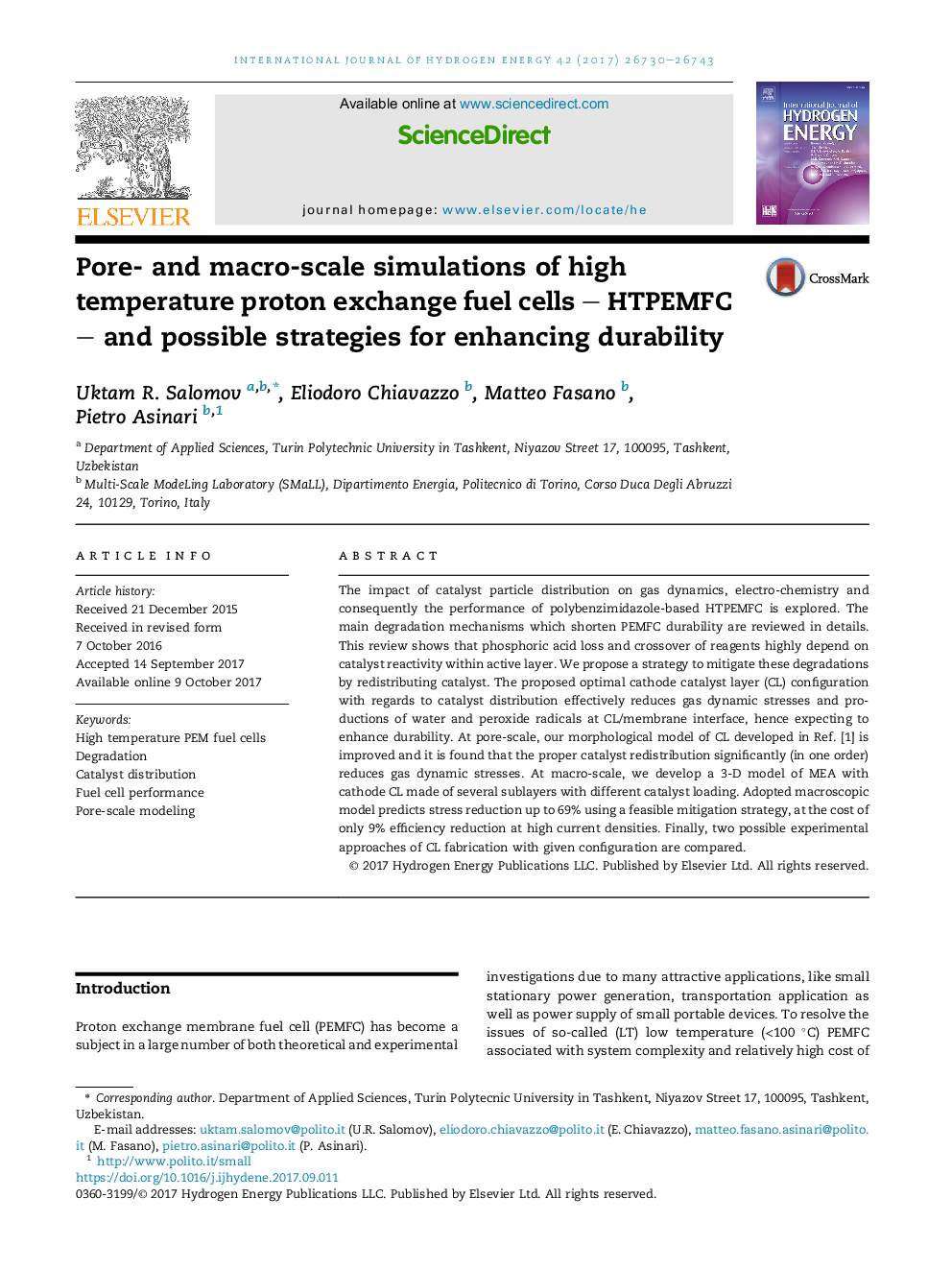| Article ID | Journal | Published Year | Pages | File Type |
|---|---|---|---|---|
| 7709790 | International Journal of Hydrogen Energy | 2017 | 14 Pages |
Abstract
The impact of catalyst particle distribution on gas dynamics, electro-chemistry and consequently the performance of polybenzimidazole-based HTPEMFC is explored. The main degradation mechanisms which shorten PEMFC durability are reviewed in details. This review shows that phosphoric acid loss and crossover of reagents highly depend on catalyst reactivity within active layer. We propose a strategy to mitigate these degradations by redistributing catalyst. The proposed optimal cathode catalyst layer (CL) configuration with regards to catalyst distribution effectively reduces gas dynamic stresses and productions of water and peroxide radicals at CL/membrane interface, hence expecting to enhance durability. At pore-scale, our morphological model of CL developed in Ref. [1] is improved and it is found that the proper catalyst redistribution significantly (in one order) reduces gas dynamic stresses. At macro-scale, we develop a 3-D model of MEA with cathode CL made of several sublayers with different catalyst loading. Adopted macroscopic model predicts stress reduction up to 69% using a feasible mitigation strategy, at the cost of only 9% efficiency reduction at high current densities. Finally, two possible experimental approaches of CL fabrication with given configuration are compared.
Keywords
Related Topics
Physical Sciences and Engineering
Chemistry
Electrochemistry
Authors
Uktam R. Salomov, Eliodoro Chiavazzo, Matteo Fasano, Pietro Asinari,
